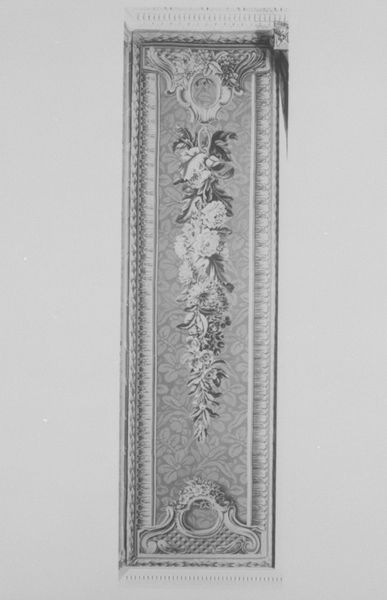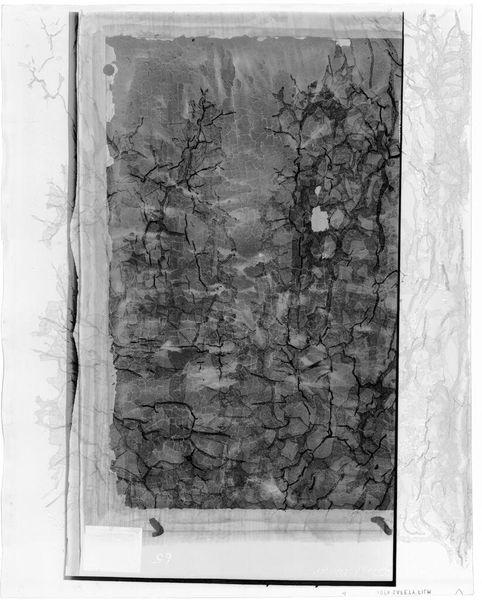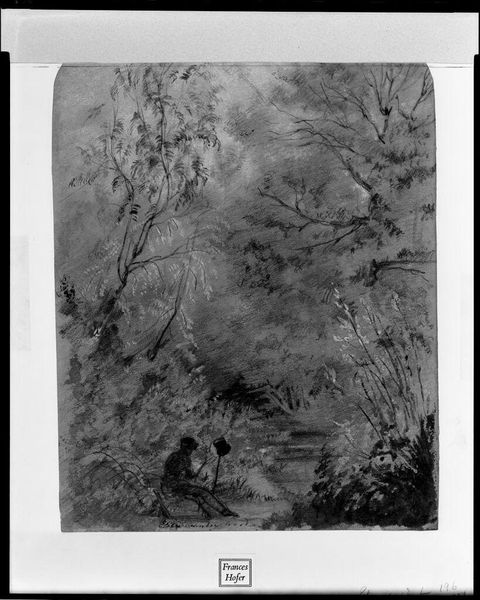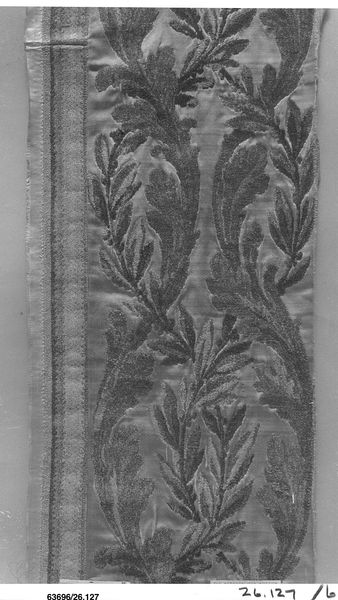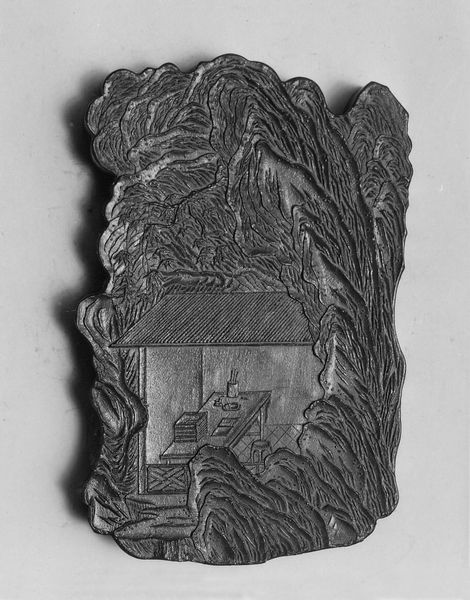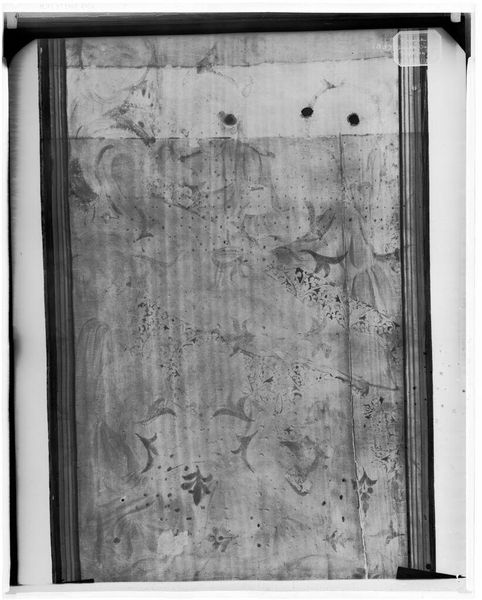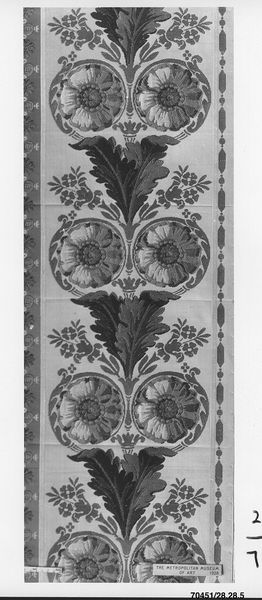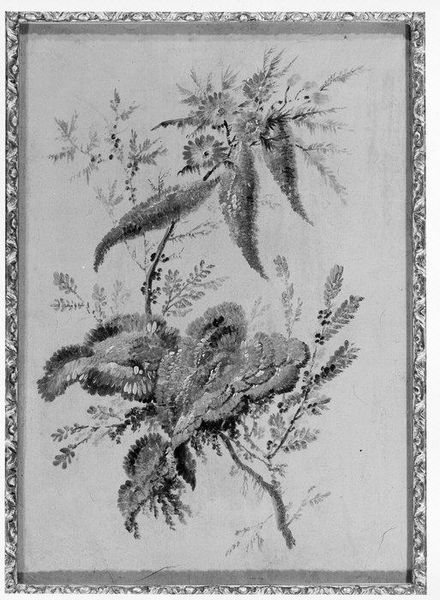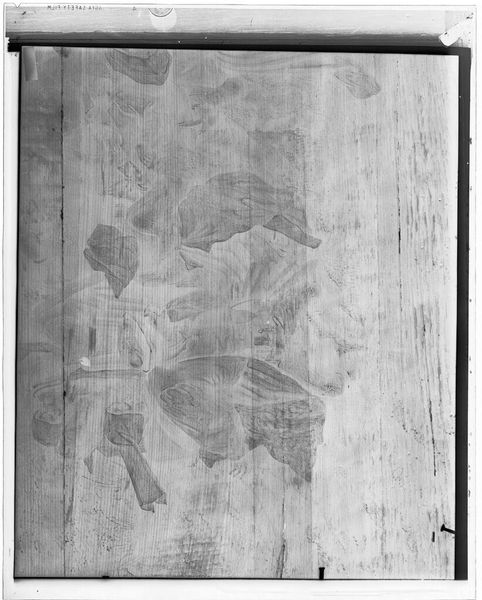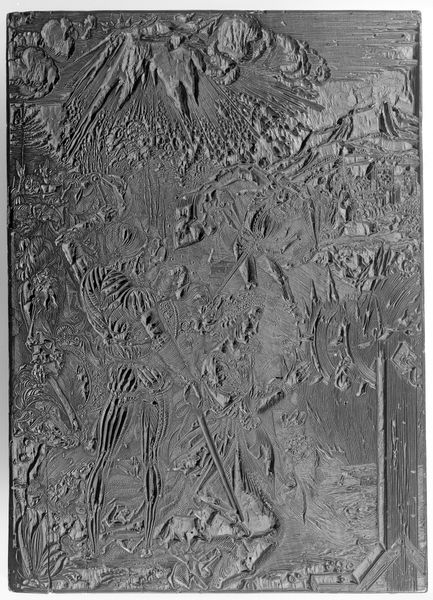
The Parrot from a set of the Italian Village Scenes 1734 - 1762
0:00
0:00
fibre-art, weaving
#
fibre-art
#
weaving
#
landscape
#
decorative-art
#
rococo
Dimensions: 9 ft. 2 in. × 21 in. (279.4 × 53.3 cm)
Copyright: Public Domain
Editor: So this piece, titled "The Parrot from a set of the Italian Village Scenes," was crafted between 1734 and 1762 by François Boucher. It’s a tapestry, which I find fascinating. It feels incredibly dense, like getting lost in a fairytale forest. What do you see when you look at this piece? Curator: Well, first, let's consider that Boucher didn't just *paint* forests, he *wove* them. Can you imagine the patience? It whispers stories of a world increasingly captivated by nature, albeit a nature carefully arranged, prettified almost, for aristocratic eyes. The Parrot is not simply present, it's *implied*, suggested within this verdant maze. And the foliage itself isn't savage, untamed – instead it dances with a Rococo elegance, frilly and light. Almost edible, like spun sugar! Don't you think there’s something a little bittersweet in the fact that a woven representation of nature, a facsimile, ends up adorning someone's parlor? It’s longing for authenticity, perhaps? Editor: That's a fantastic point. I hadn't considered the bittersweet aspect of mimicking nature in this way. So, it’s both celebrating and maybe, a tiny bit, replacing real wilderness. The layers in that thought are intriguing. Curator: Precisely. Consider its probable original setting: a grand hall, perhaps, where real trees are only glimpses outside of huge windows. Is it comforting or…confining? But tell me, does the parrot not being the primary focus alter your feeling towards it? Editor: It definitely shifts the perspective, making it about the scene rather than the specific subject. And that’s super valuable! Curator: Yes! I agree with you; observing how the work blurs and celebrates artificial and real sceneries opens my eyes. Thanks! Editor: Totally! Thinking about its placement changes the whole dialogue of the piece. It was fun talking with you about Boucher’s works.
Comments
No comments
Be the first to comment and join the conversation on the ultimate creative platform.


